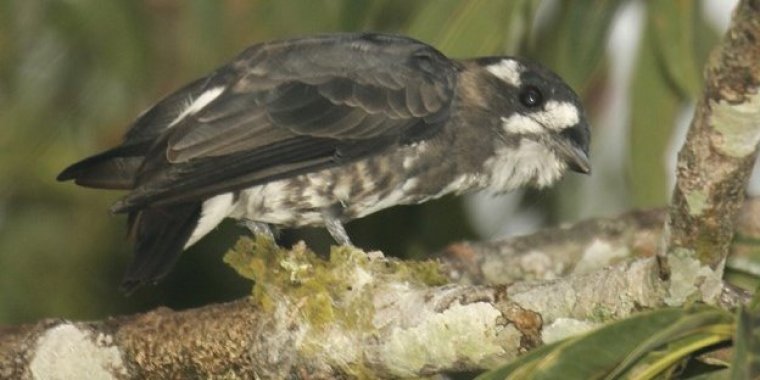| News / Science News |
'Cold spots,' not hotspots, key to rapid biodiversification
The Amazon rainforest may be a hotspot for animal and plant diversity, but Louisiana State University scientists report that new species form there less often than previously thought. Places such as deserts and mountaintops that do not have many species provide more opportunity for rapid diversification. This is a paradox of diversity -- new species form at a faster pace in "cold spots" than hotspots.

Birds such as the white-browed purpletuft may have more opportunity to diversify in "cold spots." ![]()
Researchers studied diversity in a major group of tropical birds and found that although cold spots might be extreme, with dry, unstable environments, they are also relatively empty, giving new species the elbow room to evolve.
In contrast, biodiversity hotspots such as the Amazon rainforest are the result of the gradual accumulation of species over time.
"Our results reveal a model in which species are forming faster in environmental extremes, but have accumulated in moderate environments to form tropical biodiversity hotspots," said LSU ecologist Robb Brumfield, a senior author of the paper.
This paradox was revealed thanks to samples maintained by natural history museums. The LSU Museum of Natural Science and its frozen tissues collection, which is the oldest and largest of its kind in the world, contributed tissues for 747 of the 1,287 bird species that are part of this study. The LSU sampling represented 24 countries.
"This research highlights the importance of phylogenetics in understanding fundamental questions of diversification through time and environments," says Katharina Dittmar, a program director in NSF's Division of Environmental Biology.
By analyzing the DNA from these museum tissue samples, the authors were able to map the genetic relationships of a predominant group of tropical birds called the suboscine passerines, which represent roughly one out of every three species of birds in the American tropics.
Suboscines vary widely in characteristics and habitats -- from the Andean snowline to lowland Amazonia and from cloud forests to deserts.
"Conservation efforts to save the rapidly changing tropical landscape need to focus not only on the species-rich Amazon, but also on regions that are less diverse but contribute to the generation of new species," Brumfield said. (National Science Foundation)
YOU MAY ALSO LIKE





